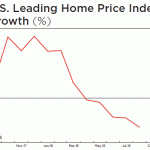The US dollar is pulling back today after yesterday’s advance. All the major currencies are higher and even the Turkish lira, which plunged nearly 5% yesterday to cap a six-day slide, is trading firmer today ([email protected]). The dollar’s losses are modest and appear corrective in nature.
The news steam is light, but there few developments to note. First, the Reserve bank of Australia kept rates on hold as widely expected. It shaved this year’s CPI forecast, which may have been seen as dovish in other circumstances, but revised the higher next year’s projection. It also identified the slowing of China as a risk.

Second, Japan reported two data series. The first is labor cash and real earnings. As we have noted previously, labor cash earnings are rising strongly in Japan. They are up 3.6% in June year-over-year, the most since the late 1990s. In June 2017, they were up 0.4% year-over-year and 0.9% at the end of the year. Adjusted for inflation, real cash earnings are up 2.8% in the past year. It is also the most in around 20 years. Where we depart from many some economists who recognize this trend, is that we do not see as strong of a link with consumption. And to our point, household spending was reported earlier today to have fallen 1.2% in June from a year ago. To be sure, it is less steep of a decline than the 3.9% drop in May, which was the largest fall in two years. In June 2017, household spending was up 2.3% year-over-year.
Third, unexpectedly, China reported that the dollar value of its reserves rose by about $5.8 bln in July to $3.118 trillion. In July, the dollar rose almost 3% against the yuan, but the Shanghai Composite rose 1%, The dollar was little changed against most of the other reserve currencies in July. The euro was virtually flat. The yen was off 1% and sterling off 0.6%. US and German bond yields were higher.
Fourth, Germany followed up yesterday’s whopping 4% drop in June factory orders with a 0.9% drop in industrial output (the market had expected a decline half the size). The May gain was shaved to 2.4% from 2.6%. Separately, but not totally unrelated, Germany reported a slightly larger than expected trade surplus (21.8 bln euros vs. 19.7 bln in May and expectations for around 21 bln). It came as a result of a 1.2% increase in imports and flat exports, which had been expected fall 0.3%). The trade surplus fueled the 26.2 bln current account surplus, which typically swells in June (without fail since 2004).


















Leave A Comment